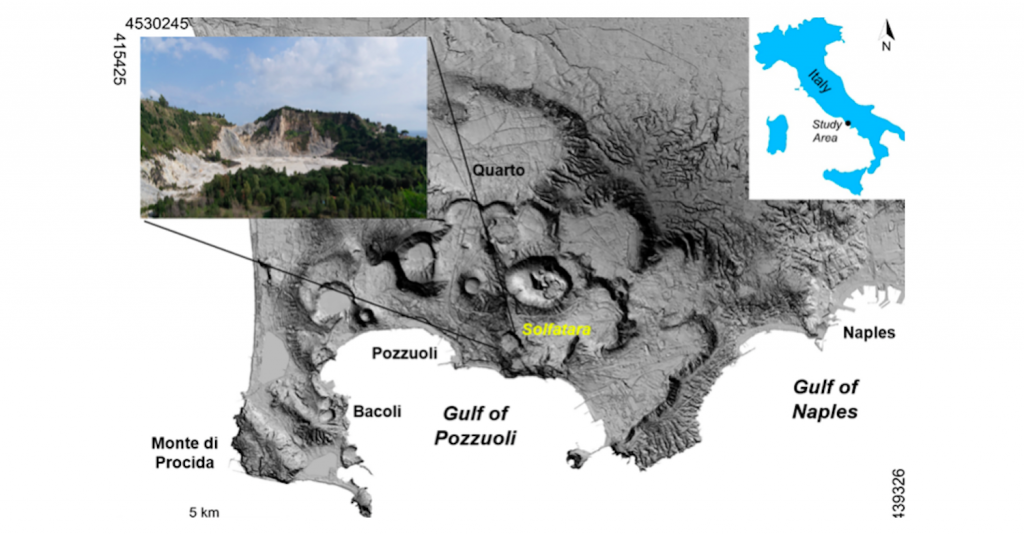A significant contribution to the assessment of the volcanic hazard of the Campi Flegrei area comes from a recent study carried out by the National Institute of Geophysics and Volcanology (INGV) and published in the Journal of Geophysical Research: Solid Earthby AGU (Advancing Earth and Space Science). The study focused on the dynamics of the two main magmatic sources underlying the Campi Flegrei caldera and reconstructed the architecture of the deep magmatic system at the origin of bradyseism.
“Calderas are volcanic depressions formed by the collapse of the ground during huge eruptions,” explained Lucia Pappalardo, INGV researcher and co-author of the study. “They often manifest phases of ‘unrest’, with frequent earthquakes, uplift of the ground (the so-called ‘bradyseism’) and a considerable flux of heat and gas. However, since this activity is due to the complex interactions between magma and the hydrothermal system stored under the volcano, it is always difficult to predict the evolution of these manifestations.”

The study showed that the variations in the composition of fumarolic gases measured in recent decades at the Campi Flegrei caldera come from the depressurization and crystallization of two main magmatic sources: a deeper one, which during the bradyseismic crisis of the early 1980s transferred a significant volume of magma towards the second, relatively shallow, source, which feeds the fumarolic gases during the recent crisis that began in 2000 and is still ongoing.
“By comparing the chemical composition of the magmas involved in past Phlegraean eruptions with that of the magmatic gases currently emitted at the fumaroles of the Solfatara, we hypothesized the current dynamics of magmatic degassing,” added Antonio Paonita, INGV researcher and co-author of the study.
“Our study shows how the gases released by the rising magma in the deep areas of the volcano’s plumbing system accumulate at the base of the overlying hydrothermal system, located about 3 km deep, which is heated and pressurized, deforming and fracturing the more superficial crustal rocks, thus giving rise to phenomena of ground uplift and earthquakes typically observed in the area.”
The researchers analysed the tiny drops of magma trapped in the crystals of the volcanic products emitted over the last 15,000 years and reconstructed the architecture of the deep magma system of the Campi Flegrei.
“Through thermodynamic models, it has been possible to reproduce the magmatic degassing scenarios which in recent decades have controlled the geochemical variations of the fumarolic gases of the Solfatara”, said Gianmarco Buono, INGV volcanologist and co-author of the study.
The study also suggests that the information obtained by combining petrological and geochemical data is fundamental to understanding dynamics of magma transfer even when this affects portions of deep crust that are ‘silent’ from a seismic point of view. This could contribute to the development of better seismic monitoring strategies in the future.
Source: INGV

